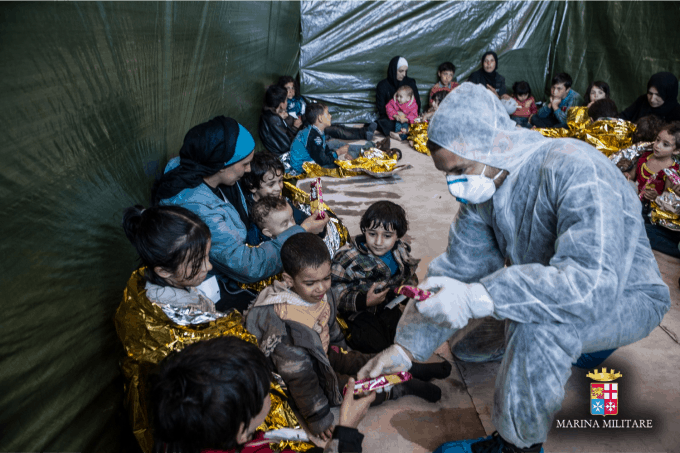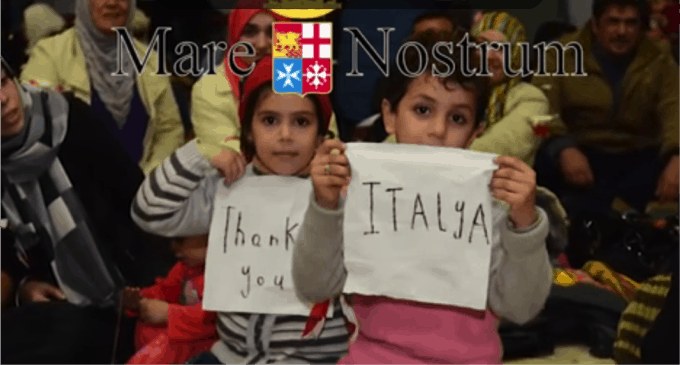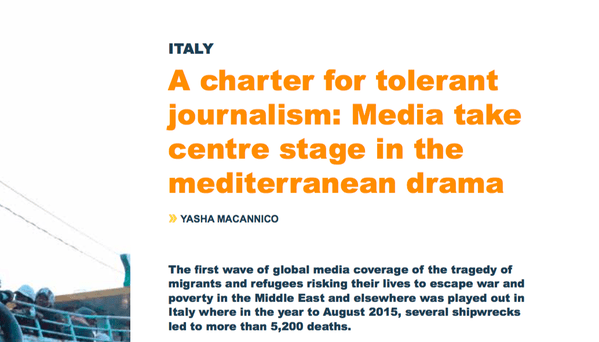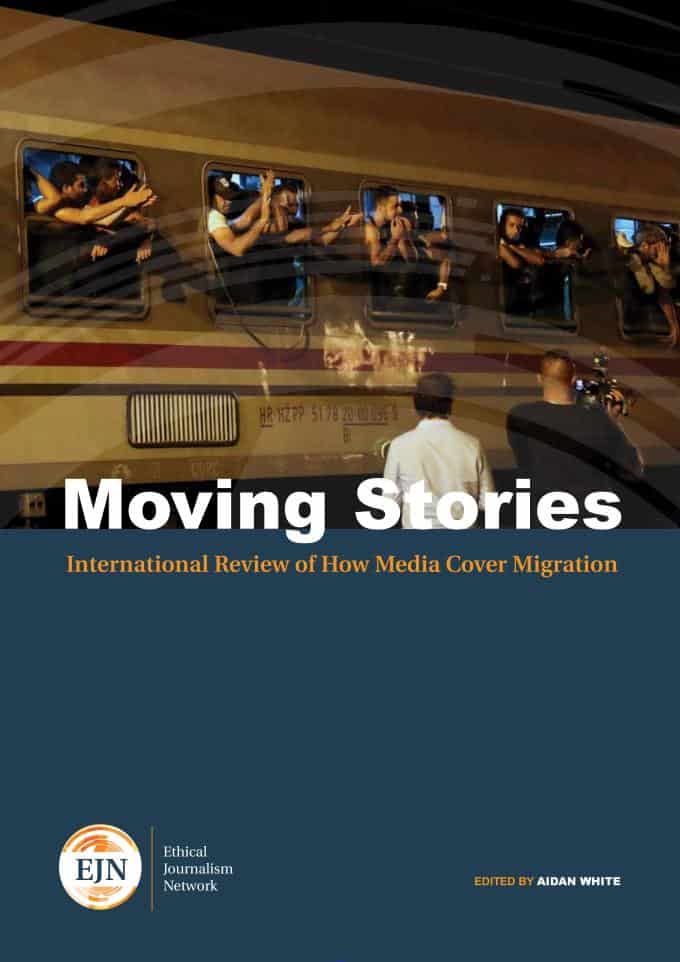Military-humanitarian narratives of the Mediterranean migration crisis
Pierluigi Musarò
Journalists and media trying to explain the migration and refugee crisis to an uncertain and confused audience know only too well that a moral discourse typically associated with humanitarian aid is juxtaposed against the reality of tighter border controls, like those we have seen on the Macedonian-Greek border in recent days.
Consider, for example, the news, images and video produced by the Italian Navy during the operation Mare Nostrum – the military-humanitarian operation in the Mediterranean targeted at both rescuing migrants and arresting smugglers. Mare Nostrum (our sea) was the Roman name for the Mediterranean Sea, hijacked by Mussolini to frame fascist propaganda about the ‘Italian lake’, and as name indicates, the possessive ‘our’ projects the Mediterranean as a European space of care and control, while it ambiguously refers to both Italy and Europe.
Looking at the images produced by the new ‘frontline journalists’(read: soldiers on the ships), we see how most of the photographs trigger sympathy for the soldiers and pity for the migrants.
The images draw us into a community of witnesses. A community in which the spectator is positioned as the possible saviour, while the rescued bodies are the ‘other’. Border control is redefined within a moral imagination that puts emphasis on human vulnerability. The soldiers’ activities are depicted as similar to the recurring type of imagery of aid delivery, with just rescued, grateful migrants receiving food parcels and water. Quite revealingly, women with their tiny, innocent babies are the most commonly represented subjects.
 The extent to which the legitimacy of this military-humanitarian operation (which costs €9 million per month) depends on how it is described and explained through media, becomes evident through the analysis of the official video of the operation.
The extent to which the legitimacy of this military-humanitarian operation (which costs €9 million per month) depends on how it is described and explained through media, becomes evident through the analysis of the official video of the operation.
As you can see, while in the first part of the video we witness the dramatic ‘emergency’, feeling the pressure to be concerned or upset in response to the horrifying images; in the second part, the high-adrenaline spectacle pivots on the soldiers challenging the waves to resolve the catastrophe.
And, what about the happy ending of the final frame that presents us with an intensely moralistic context that reframes the operation as humanitarian benevolence? Outside of any historical or political framework, of course.
The issue of migration flows is here construed as a journey without destination, as a tragic game of fate. As protagonists of a crisis that comes from nowhere, migrants are depicted at the same time as subjects who are forced to put themselves in danger – departing on unsafe boats – and as subjects at risk (of death and trafficking) who need to be saved.
Speaking the language of combatting human smuggling and potential terrorists, while rescuing lives and protecting migrants’ human rights, Mare Nostrum performs the spectacle of the ‘humanitarian battlefield’. It is one spectacle, but different publics understand it differently.
Like the different light refractions of the same kaleidoscope, the national spectacle of surveillance, policing, and border control is also the cosmopolitan spectacle of rescue and salvation. Mare Nostrum speaks different languages to different political constituencies: to migrants and citizens, to smugglers and transnational activists, to right-wing government coalition members and NGOs.
 Two recent examples unequivocally demonstrate how humanitarian discourses of assistance and protection are an integral part of on-going migration governance. On 15 October 2015, during his visit to the Italian Parliament, the UN Secretary-General, Ban Ki-moon, paid homage ‘to the Italian soldiers who saved thousands of human lives in the Mediterranean’, and thanked ‘the Italian population for the efforts made to welcome and assist migrants.’ Concluding the event, the Italian Prime Minister, Matteo Renzi, affirmed: ‘the Italy that welcomes you is the country of the Italian officers who became nurses to deliver babies in the ships on the Mediterranean. It is an Italy of which we are proud.’Again, the bio-political imperative of managing lives is expressed through an aesthetics of trauma, where war (on migrants) is represented both as an intimate experience of sorrow and a public act of peace-making.
Two recent examples unequivocally demonstrate how humanitarian discourses of assistance and protection are an integral part of on-going migration governance. On 15 October 2015, during his visit to the Italian Parliament, the UN Secretary-General, Ban Ki-moon, paid homage ‘to the Italian soldiers who saved thousands of human lives in the Mediterranean’, and thanked ‘the Italian population for the efforts made to welcome and assist migrants.’ Concluding the event, the Italian Prime Minister, Matteo Renzi, affirmed: ‘the Italy that welcomes you is the country of the Italian officers who became nurses to deliver babies in the ships on the Mediterranean. It is an Italy of which we are proud.’Again, the bio-political imperative of managing lives is expressed through an aesthetics of trauma, where war (on migrants) is represented both as an intimate experience of sorrow and a public act of peace-making.
On the other hand, in these days we finally see several humanitarian actors criticising the EU-Turkey deal, and their use of humanitarian narrative (and actors) to legitimise border control. UNHCR, Médecins Sans Frontiers, the IRC, and the Norwegian Refugee Council say they will not work on controversial aspects of the EU-Turkey migration deal. “UNHCR is concerned that the EU-Turkey deal is being implemented before the required safeguards are in place in Greece,” a spokesperson said. “UNHCR is not a party to the EU-Turkey deal, nor will we be involved in returns or detention. We will continue to assist the Greek authorities to develop an adequate reception capacity.” It is an important point. Migration and asylum are political concepts. And the statements of these actors raise questions on the (terrible) EU crisis management, denouncing how humanitarianism is often being confused with political responsibility.
 Journalists at the top of their game know that even though images can do much to expose a crisis, they can do little to explain it. Rather than promoting solidarity in the name of human dignity, the military-humanitarian narrative reproduces specific value hierarchies and evaluations of human life that are unequal. As in other instances of humanitarian government, care and control both fuel and feed off each other, nurturing a ‘compassionate repression’ that fails to bridge the gap between ‘us’ and ‘them’.
Journalists at the top of their game know that even though images can do much to expose a crisis, they can do little to explain it. Rather than promoting solidarity in the name of human dignity, the military-humanitarian narrative reproduces specific value hierarchies and evaluations of human life that are unequal. As in other instances of humanitarian government, care and control both fuel and feed off each other, nurturing a ‘compassionate repression’ that fails to bridge the gap between ‘us’ and ‘them’.
In stark opposition to this framing, we should keep in mind what is happening in the last few months. The collective march of refugees across the Balkans has rendered the agency of migrants themselves highly visible, exposing the crucial role they play in challenging existing governance structures. As we can see, people on the move challenge the subject position of the helpless victims, and reassert their agency, their social and political identities, their hopes and dreams, their capacity to choose their own destiny.
Note: This article is an abridged version a piece published in the Euro Crisis in the Press blog run by the London School of Economics.
Pierluigi Musarò is Associate Professor of Sociology at the Department of Sociology and Business Law and at the School of Political Science, University of Bologna. He is also Visiting Fellow at the London School of Economics and Political Science, and at the Institute for Public Knowledge, New York University.
Photo Credits: Website of the Italian Navy marina.difesa.it

MEDIA AND MIGRATION
This blog is published as part of the EJN’s ‘Media and Migration‘ campaign, an international effort to improve coverage of migration and refugee issues.
In December 2015 the EJN published ‘Moving Stories’, an international review of how media cover migration in 15 countries and regions including Italy and the European Union.
Resources from the report:
Read the other sections of the report here: